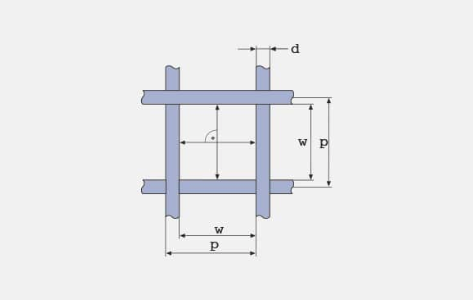Woven Wire Mesh: Glossary, Terminology & Measurement
Everything we do at W.S. Tyler is based around woven wire mesh. We have been making test sieves and other particle analysis equipment using woven wire for over 100 years. Since then, we have expanded to filtration products and other customized filters using woven wire.
If you have ever worked with woven wire, you probably know how technical and complex it can get.
Things like warp wires, weft wires, open area, weave types, and pitch are just some of the terms you may need to be familiar with if you are using woven wire in your application.
We talk about these terms in all different articles throughout our learning center, but we wanted to put them all into one place to serve as a one-stop-shop for all of your terminology.
In this article, we are going to cover the terms we think you should know about woven wire, delivery options, weave types, and how to determine both wire diameter and aperture.
Terminology
Aperture Width: The distance between two adjacent warp or weft wires, measured in the projected plane at the mid positions
Warp: All wires running lengthwise of the cloth
Weft: All wires running across the cloth
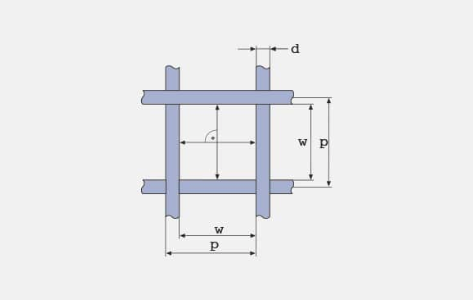
Wire Diameter (d): the width of the wires in the woven cloth
Pitch (p): the distance between the midpoints of two adjacent wires. Represents the sum of the aperture width (w) and wire diameter (d)
Number of Apertures per unit length (n) is the number of apertures counted in a row one behind the other for a given unit length. The unit length may be 1 cm, 1dm, 1in, or any other unit of length.
Mesh: number of apertures per linear inch =25.4mm : pn/cm = number of apertures per cm = 10 : pn/cm2 = number of apertures per cm2 = (10 : p)2
Open Screening Area : is the percentage of the area of all apertures in the total screening surface, or the ratio of the square of the nominal aperture width (w) to the square of the nominal pitch (p), rounded to a full percentage value.
A° = 100.(w : p)2
Type of Weave: the way in which the warp and weft wires cross each other
Delivery
Roll Lengths: A standard roll is 25m or 30.5m long. Half rolls are 12.5m or 15m long. The length of the rolls may vary by plus or minus 10 percent. The delivered length is the one invoiced. Partial lengths: A wire cloth roll may consist of a maximum of three pieces. The minimum length of a roll piece is 2.5m.
Cloth Width: For full rolls or roll pieces, the width of the cloth must not be less than the nominal width, but may exceed it by 2%.
Strips and Cut-To-Size Pieces: For strips, the width must be specified. When ordering quantities less than a standard roll, the length of individual strips may be reduced accordingly. For cut-to-size pieces, the sides, lengths, angles, and radi must be specified.
Labeling
Woven wire cloth must be labeled with the following information:
- The name and the trademark of the manufacturer
- The material of the wire
- The nominal aperture width (w)
- The nominal wire diameter (d)
- The length and width of the roll or strip, or the size and number of pieces
- The weight (mass), if required
If the cloth roll consists of several roll pieces, the length of each piece must be indicated.
Woven wire cloth in strips or pieces must be labeled on the outer packing. The length and weight of each strip (coil) must be specified, subject to agreement.
Types of Apertures
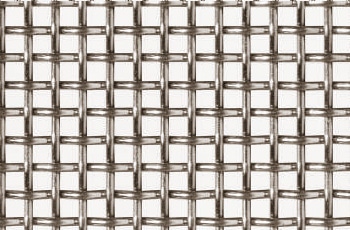
.jpg?width=357&name=rectangular-oblong%20(1).jpg)
Square Aperture Rectangular "Oblong"
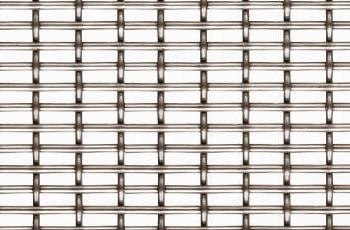 .
. 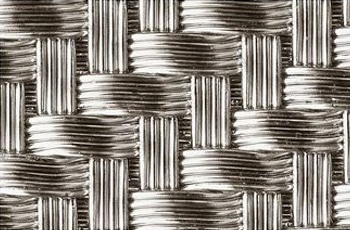
Rectangular "Broad" Zero Aperture "Filter Cloth"
Determination of the Wire
The post-weaving wire diameter will be determined using one of the following procedures:
- Measuring wires that have been loosened from the
woven wire cloth by using a micrometer screw. - Measuring the wires in the cloth, provided there is
sufficient space for the instrument.
Due to the heavy deformation that occurs during the weaving, the preprocessed tolerance of the wire cannot be determined in the woven wire cloth; however, the nominal wire diameter can be calculated using the empirical weight formula.
Determination of Aperture
- As part of a simplified measuring method, the number of pitches (p) in a given length (L) is determined.
- The given length is then divided by the number of pitches to calculate the average pitch. Subtracting the wire diameter (d) from the average pitch provides the aperture width (w).
In order to determine the mean value of the aperture widths, it is important to measure as many pitches as possible to obtain a representative sample.
When measuring aperture widths between 1mm and 16mm, ten pitches have to be checked. Smaller widths, such as 0.1mm or less, must be checked within twenty pitches.
To Sum It All Up
We hope this article helped you wrap your head around some of the important terms and measurements for woven wire mesh.
The important thing to remember is that although wire mesh can seem “simple,” there are a lot of technical things to keep in mind if you are looking at using woven wire for your project or systems.
If you are looking for more information on wire mesh like sizes, options, or added value services you can check out our Guide to Wire Mesh.
As always, if you have any questions regarding woven wire feel free to reach out to us and we would be happy to help.
Want all the latest industry trends and innovations sent directly to your inbox? Subscribe to our monthly newsletters today.

